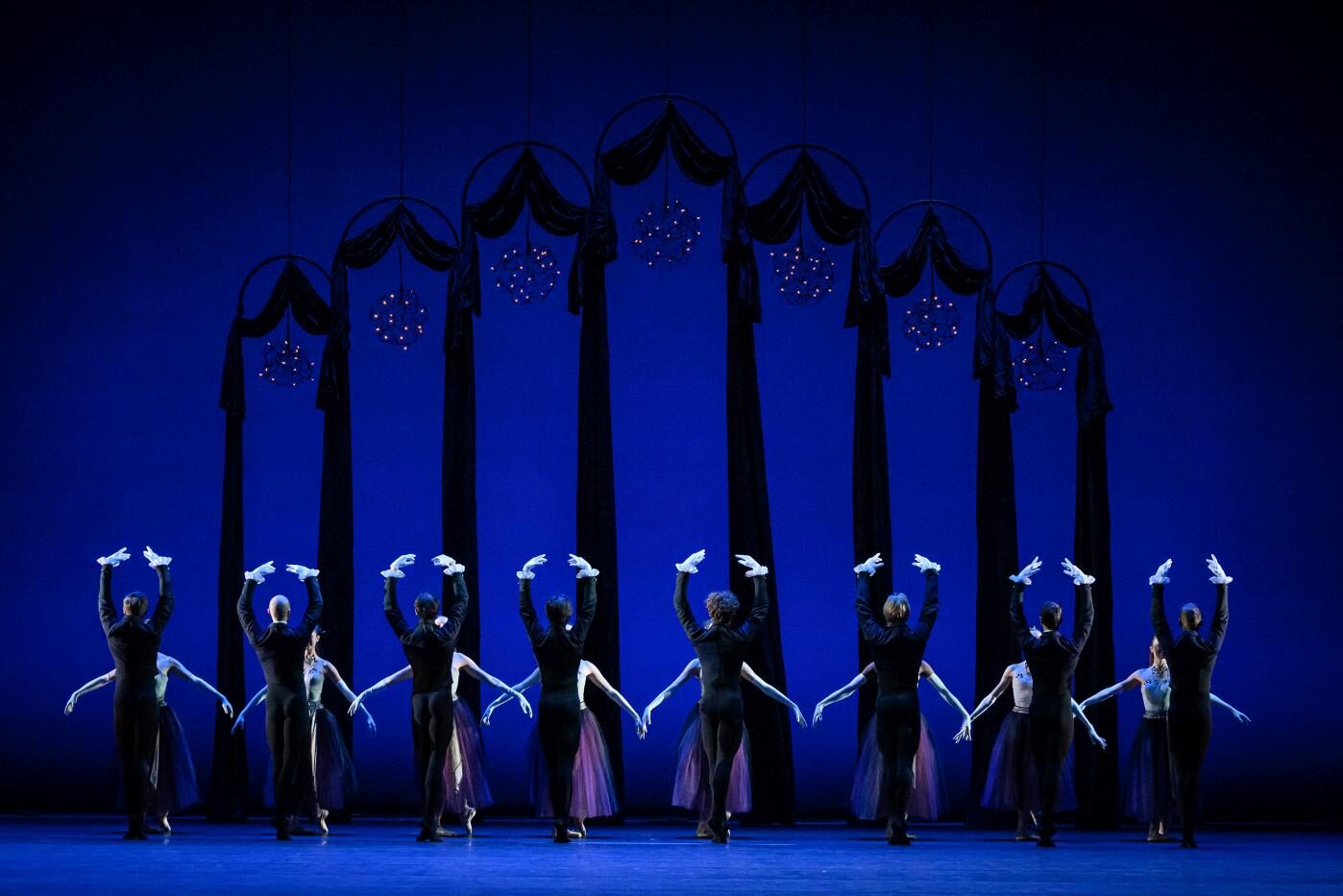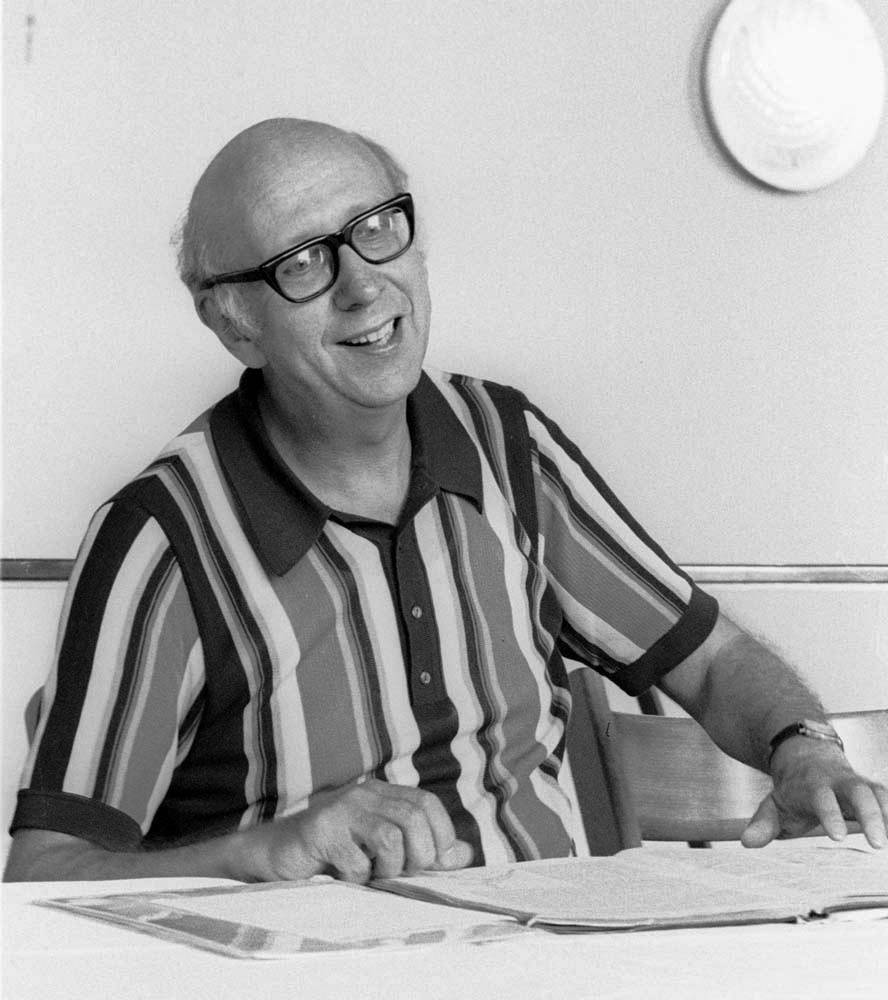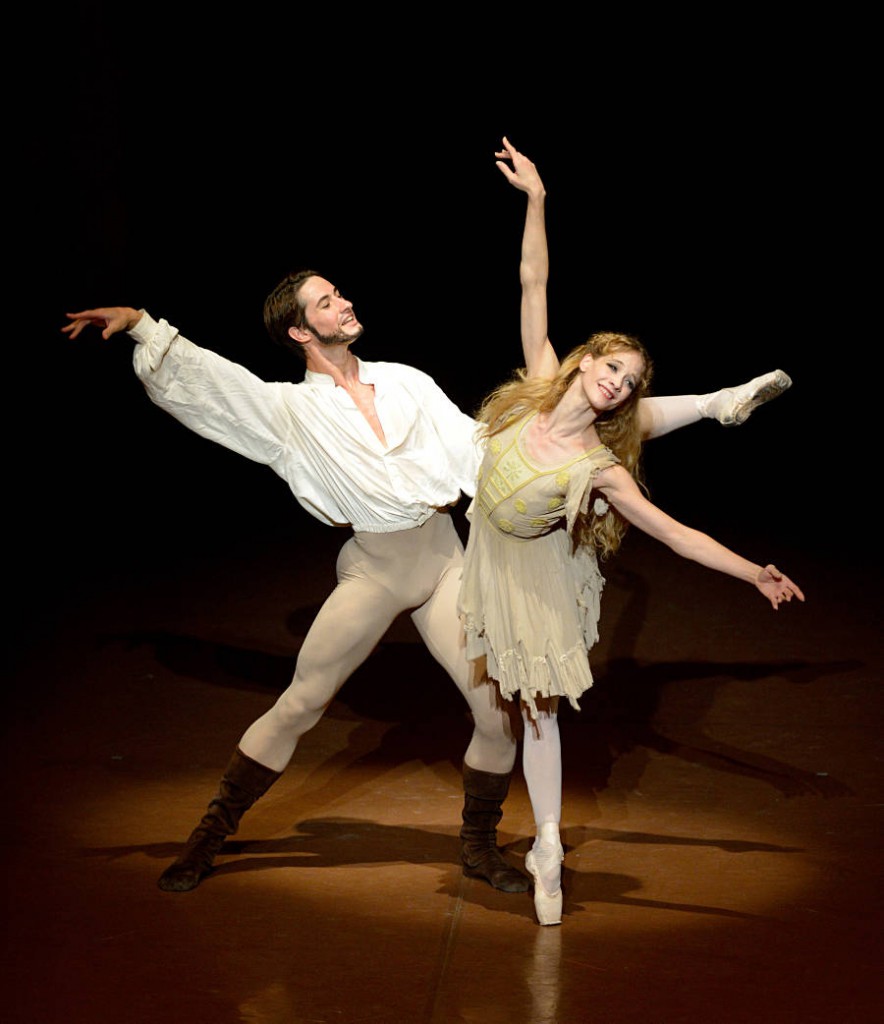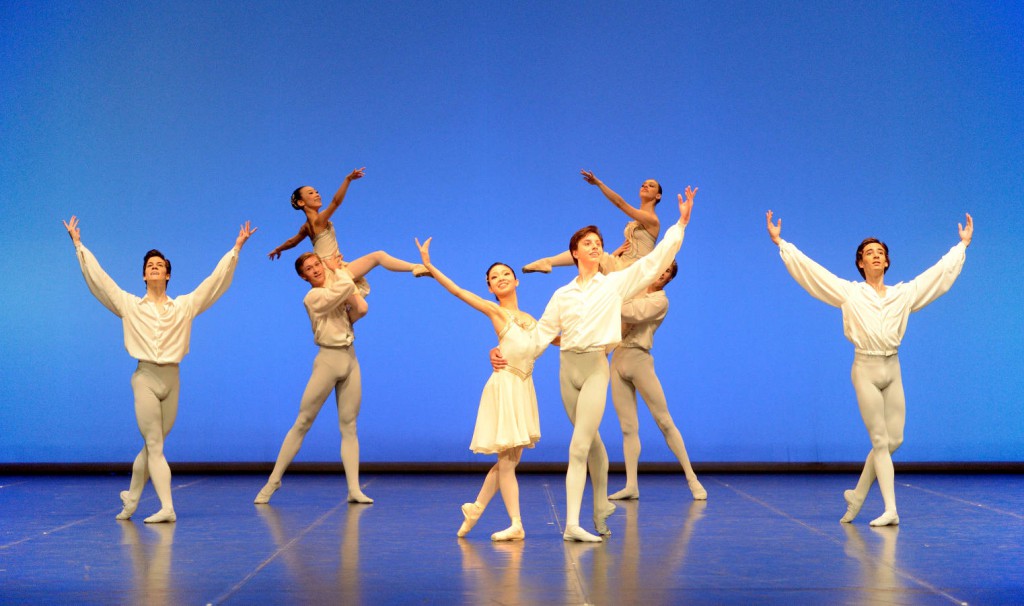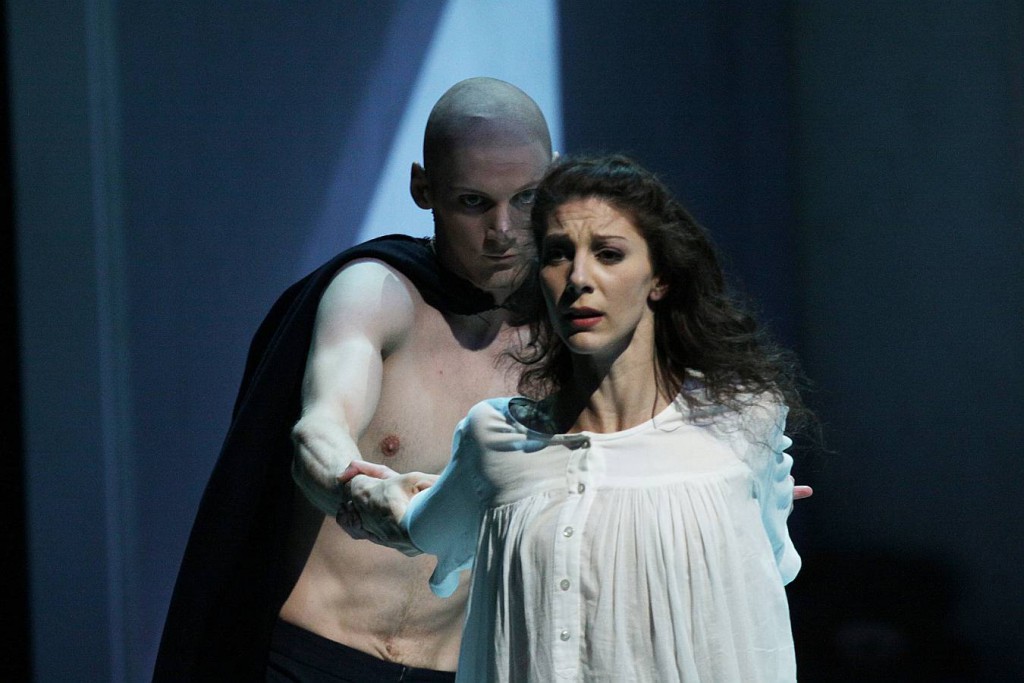Formative Figures Bid Their Farewell
“Romeo and Juliet”
Stuttgart Ballet
Stuttgart State Opera
Stuttgart, Germany
July 19, 2014
by Ilona Landgraf
Copyright © 2014 by Ilona Landgraf
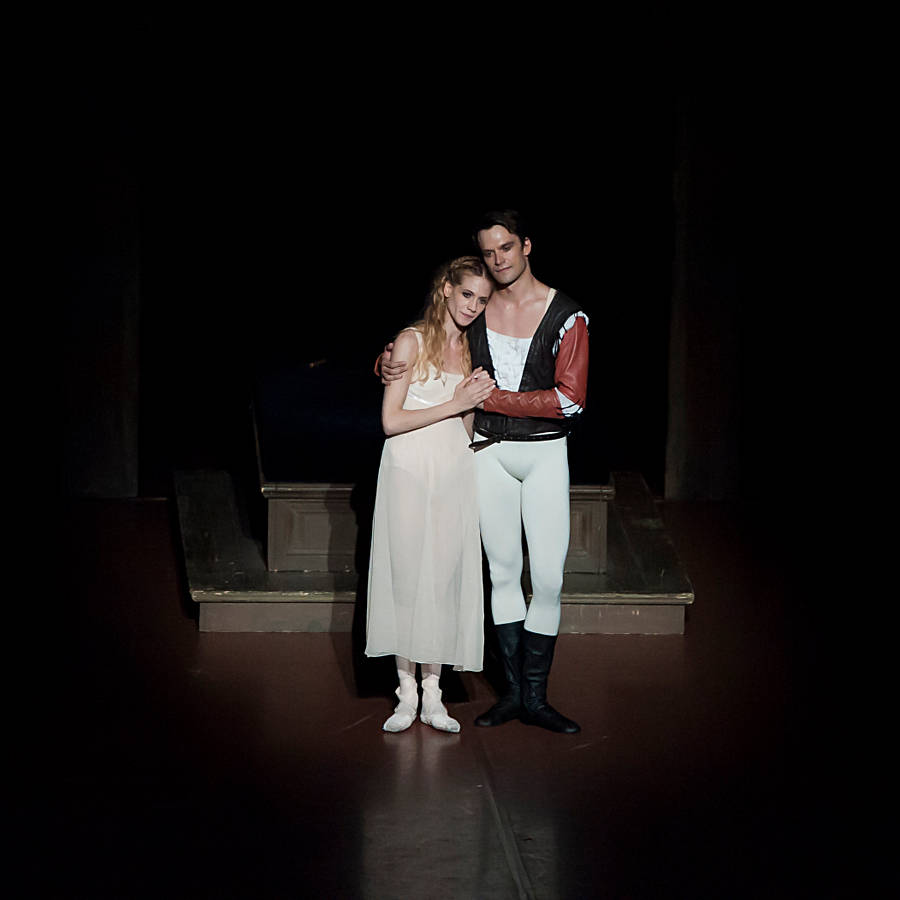 Stuttgart Ballet closed its season with a set of performances of John Cranko’s “Romeo and Juliet”. Five different couples danced the star-crossed lovers. A remarkable number of these renditions were first rate. Again, the Stuttgart company upheld its high standard. For one of the lead pairs, more precisely for one Romeo, Shakespeare’s tragedy was a special event. Filip Barankiewicz bid his farewell to the stage last Saturday.
Stuttgart Ballet closed its season with a set of performances of John Cranko’s “Romeo and Juliet”. Five different couples danced the star-crossed lovers. A remarkable number of these renditions were first rate. Again, the Stuttgart company upheld its high standard. For one of the lead pairs, more precisely for one Romeo, Shakespeare’s tragedy was a special event. Filip Barankiewicz bid his farewell to the stage last Saturday.
After studying at the State Ballet School of his home country Poland and, later, with Marika Besobrasova in Monte Carlo, Barankiewicz joined Stuttgart Ballet in 1996. It was at the time when Reid Anderson had assumed the directorship and was assembling a rejuvenated company. Barankiewicz quickly rose through the ranks. In 2002 he was promoted to first soloist. Blessed with irrepressible high spirits, a captivating stage presence and especially a virtuoso talent for jumps – Japanese fans call him ‘Mr Jump’ – the charming Pole brought down the house on many an occasion. One connoisseur thought he was unforgettable in the “The Flames of Paris” duo. No question but that Barankiewicz was world-class! One of his most striking characteristics, however, is his courtesy. A gentleman, he has been highly regarded by his colleagues and – after eighteen years with Stuttgart Ballet – is a shining example for the ensemble’s younger generation. Barankiewicz will certainly be missed. (more…)
